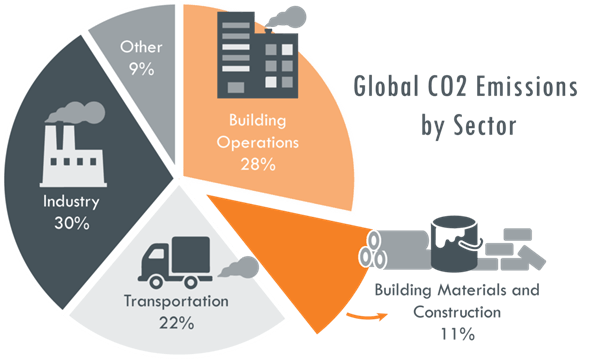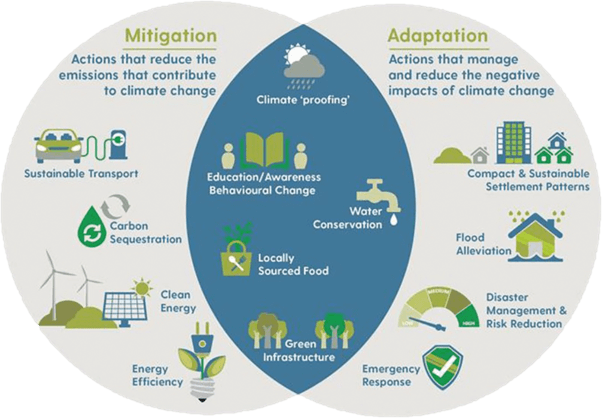
Malcolm Johnson
Questions answered by this expert
Fascinating question, the short answer is absolutely! In fact, buildings account for approximately 40% of global CO2 emissions (the main source of climate change), so if we actually want to make a serious impact on the amount of current emissions, we have to invest more resources in building more eco-buildings and retrofitting existing buildings to be more sustainable. However, ‘sustainable buildings’ consist of two separate but connected aspects related to their emissions, which are typically called operational carbon and embodied carbon.

Operational carbon refers to the emissions that are produced to keep a building running. This includes running heat or air conditioning, powering lights and computers, and making sure water and waste are going to the right places. Typically, when we make decisions to reduce emissions in our schools or homes, to make them more sustainable, we focus on these operational emissions, such as using more energy efficient appliances or making renovations that reduce the need to run heat or air conditioning year-round. Fortunately, there are countless approaches we can take to reduce operational carbon in buildings, make them more efficient, and ensure they emit at little carbon as possible. Yet, while operational carbon accounts for a larger share of global emissions at 28% compared to embodied cardon at 11%, it is estimated that these will be the same by 2050.
So what is embodied carbon? This is the amount of carbon emitted during the construction of a building, including the raw materials, their manufacturing and refinement, transport from one location to the next, and the waste produced during construction. Walls, carpets, support beams, and everything that makes up a building is manufactured and produces emissions. The biggest challenge with embodied carbon is that once a building is up, those emissions cannot be reduced, even with the most energy efficient appliances. With Australia expecting the construction of hundreds of millions of new homes, apartments, and offices by 2050, it is essential that they are not only built to be energy efficient, but also built efficiently to reduce the amount of embodied carbon as much as possible.
Great question, one that a lot of experts are working on every day! While the answer to this question differs greatly between each of those different groups, a good place to start is break down climate goals into two main categories: mitigation and adaptation. Mitigations are the actions you take to reduce contributions to climate change while adaptations are the actions you take to be better prepared for the negative impacts caused by climate change. Even those these are typically separated when we write plans and policies, it is not either/or, but both at the same time. As for your school, a local business, or your wider community some of these actions are more achievable than others.

The most important thing you can do is to become informed, like by reading and watching all the answers on Curious Climate! Do you know how much water and electricity your school uses? Has your school considered adding solar panels or purchasing electric school buses? Do you know where the food in your cafeteria comes from or if your school is at risk of floods or bushfires? Knowing the answers to these questions is the first step in taking action to address climate change. Many businesses have already taken this step by identifying where they can and can’t take action to reduce their impact and if they are climate “proofed”, meaning are they prepared either physically or financially for extreme weather events.
For communities, like many of those across Tasmania and Australia, there have been plenty of efforts to research and write both climate change mitigation and climate change adaptation plans. The plans include actions like putting in more electric car charging stations, replacing lightbulbs with more energy efficient LEDs, creating climate change outreach programs, and developing vast disaster management plans so that you, your family, your school, and all the local businesses are prepared for floods, bushfires, and other disasters. The biggest challenge for communities is that there are not enough resources to cover every action they want to take. By working with your school to both mitigate and adapt to climate change, you can help alleviate their burden and help everyone to meet their climate goals.










